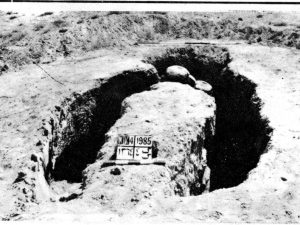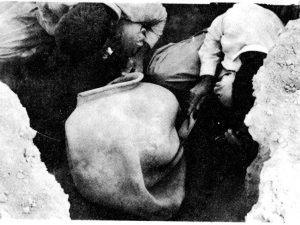Kahrizakکهریزک
Location: The site of Kahrizak is located to the south of the city of Tehran, Tehran Province
35°31’17.1″N 51°21’49.9″E
Historical Period
Iron Age
History and description
Kahrizak is the name of a locality in the southern suburbs of Tehran, known for being the archaeological site of a series of first-millennium B.C. pottery kilns. The site consists of a series of low mounds located along the southern limit of Behesht-e Zahra cemetery (today the largest cemetery in the region of Tehran). The mounds are cut by small watercourses flowing in the direction of the Central Desert; the largest one of these seasonal watercourses is called Naqārreh-Khaneh. The ancient mounds stretch along the left bank of the stream. Kahrizak was a workshop for the production of pottery in the early first millennium B.C.
Archaeological Exploration
A short season of excavation was carried out at Kahrizak by Seyfollah Kambakhsh Fard, on behalf of the Iranian Center for Archaeological Research, in the spring of 1985 (Kambakhsh Fard, (Tehran-e sehezārodevist sāleh, pp. 142-149). The excavation yielded five pottery kilns with grey ware sherds typical of the early Iron Age (figs. 1 and 2). The kilns were reached some 0.50 m below the surface of the mound. One of the kilns still contained a very large, dark grey jar that had been distorted in the course of the firing. Another of the kilns yielded the grey ware sherds of a pithos that had been decorated with two registers of applied relief designs showing snakes.
Bibliography
Kambakhsh Fard, S., Tehran-e sehezārodevist sāleh bar asās-e kavoshhāy-e bāstānshenāsi, Tehran, 1370/1991.
Author: Ali Mousavi
Originally published: March 3, 2022
Last updated: January 11, 2025



































































































































